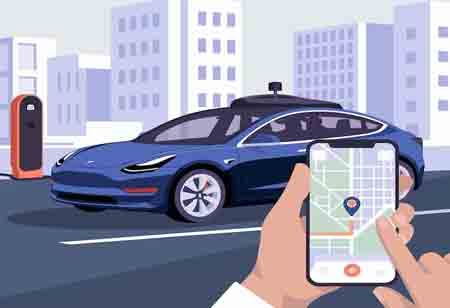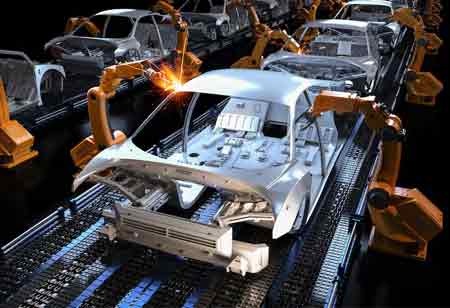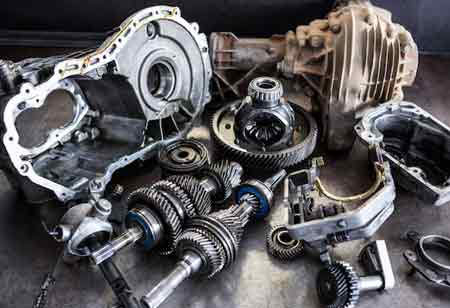Thank you for Subscribing to Auto Business Outlook Weekly Brief
Advancing Transportation Systems with Emerging Smart Mobility Technologies
Emerging smart mobility technologies are transforming transportation systems by improving efficiency, sustainability and accessibility while addressing challenges like congestion emissions and parking with innovative solutions.

By
Auto Business Outlook | Tuesday, November 12, 2024
Stay ahead of the industry with exclusive feature stories on the top companies, expert insights and the latest news delivered straight to your inbox. Subscribe today.

Emerging smart mobility technologies are transforming transportation systems by improving efficiency, sustainability and accessibility while addressing challenges like congestion emissions and parking with innovative solutions.
FREMONT CA: Advancing transportation systems with emerging smart mobility technologies is transforming how people move, making travel more efficient, sustainable, and accessible. Smart mobility redefines urban landscapes and transportation networks with innovations such as autonomous vehicles, electric transportation, connected infrastructure, and AI-powered traffic management. These technologies improve safety, reduce emissions, and optimise traffic flow, and they are also opening new possibilities for seamless, multi-modal journeys.
Evolution of Urban Mobility
Urban mobility has experienced significant shifts due to the growing urban population and the increased demand for efficient transportation solutions. Traditional public transport systems alone have struggled to meet the needs of these expanding populations, leading to various issues such as traffic congestion, parking difficulties, and environmental challenges. While recent years have seen the rise of new mobility options, global events have also played a significant role in reshaping the landscape of urban transport, impacting sectors such as shared and micro-mobility.
The Role of Parking in Urban Mobility
Parking remains a critical component of urban mobility, with the challenge of finding available parking spaces contributing to traffic congestion in many cities. Smart parking technologies have been integrated into urban infrastructure to address these issues. These solutions utilise various innovations, such as electric vehicle (EV) charging stations and digital reservation systems, to streamline parking and reduce congestion. By incorporating technology, cities can better manage parking demand and optimise the use of available space, making urban mobility more efficient and sustainable.
Trends Shaping the Future of Urban Mobility
Electrification of Transportation: The shift towards EVs is rapidly gaining momentum, driven by government incentives, technological advancements, and growing environmental awareness. As more nations recognise the need to reduce carbon emissions, EV adoption continues to rise, with many governments providing subsidies and infrastructure support to encourage the transition. This movement is helping to create a more sustainable transportation landscape while reducing air pollution and dependence on fossil fuels.
Growth of Shared Mobility: Changing attitudes toward vehicle ownership, particularly among younger generations, contribute to the rise of shared mobility services. These services offer an affordable, flexible, and eco-friendly alternative to traditional car ownership. Shared mobility options such as car-sharing, bike-sharing, and ride-hailing have become increasingly popular, offering a solution to urban congestion and reducing the overall need for private vehicles. By promoting greater access to transportation while lowering costs, shared mobility is helping to reshape how people navigate cities.
The Rise of Autonomous Vehicles: Autonomous vehicles represent a significant advancement in the evolution of urban transportation. These self-driving cars promise to enhance road safety, increase accessibility, and reduce transportation costs. As autonomous technology becomes more integrated into urban planning, the potential for fewer parking spaces, more green areas, and decreased congestion grows. Additionally, autonomous vehicles improve last-mile connectivity, offering seamless integration with other modes of transport like electric vehicles, shared mobility services, and public transit. This integration is expected to create a more efficient and interconnected transportation network, providing more sustainable urban mobility solutions.
The path toward fully autonomous vehicles is complex and requires careful, incremental progress. Rushing the development of this technology without due consideration of safety and regulatory frameworks could lead to significant setbacks. Achieving autonomous mobility demands a systematic and collaborative approach, with industries working together to tackle the challenges. By learning from past experiences and continuously refining the technology, the vision of a fully integrated autonomous mobility system can eventually be realised. However, it will require time and careful attention to detail.






